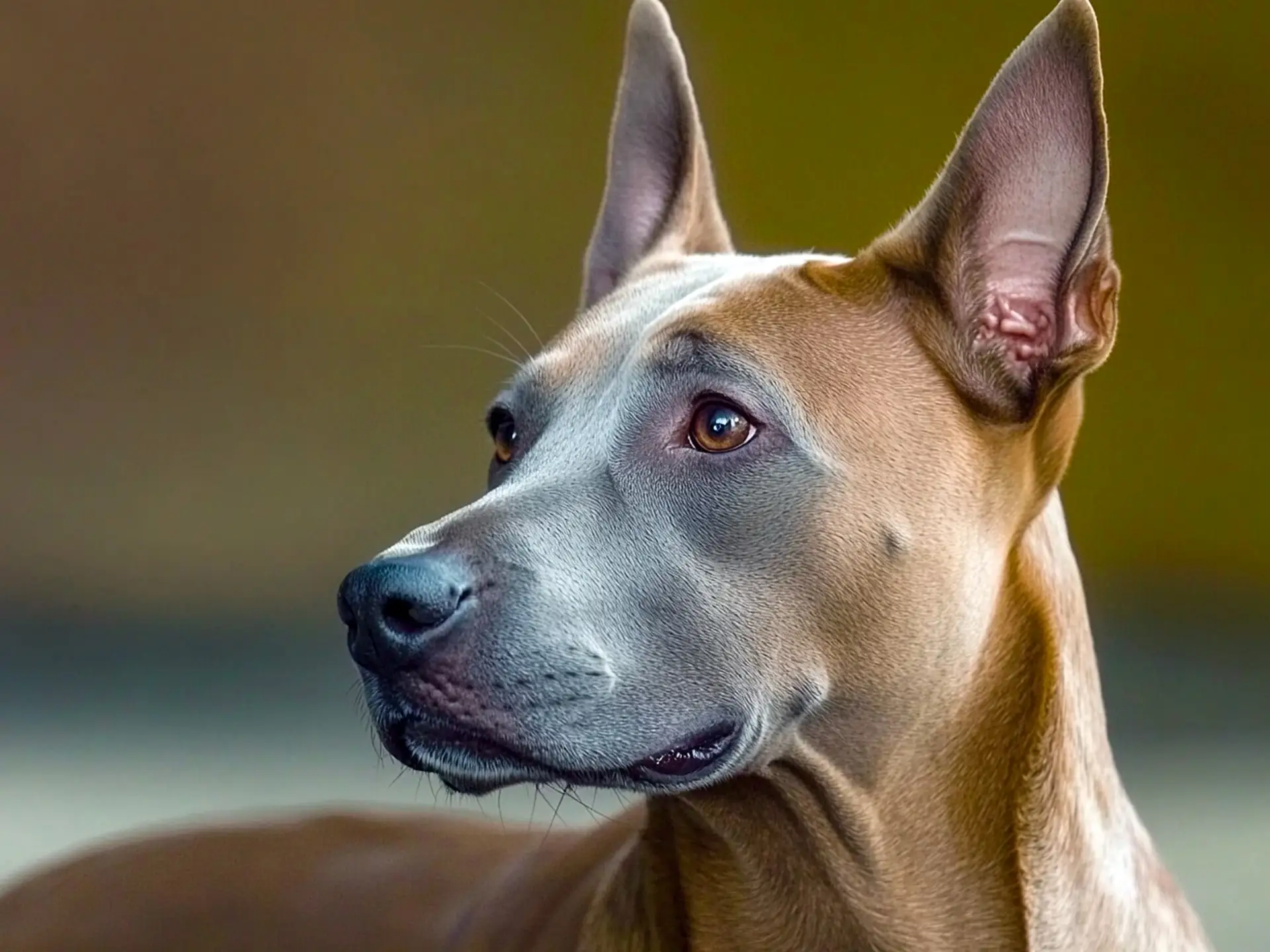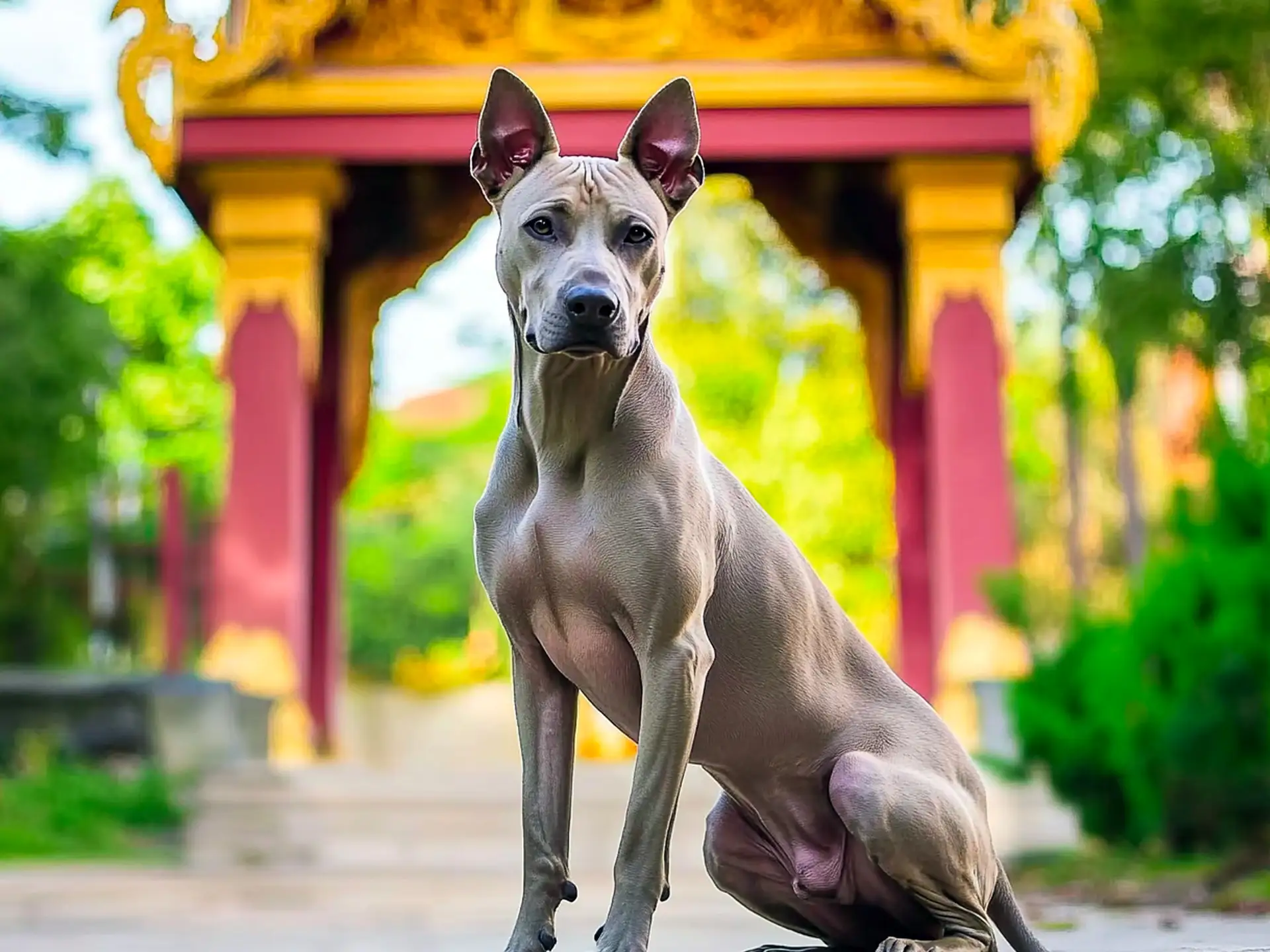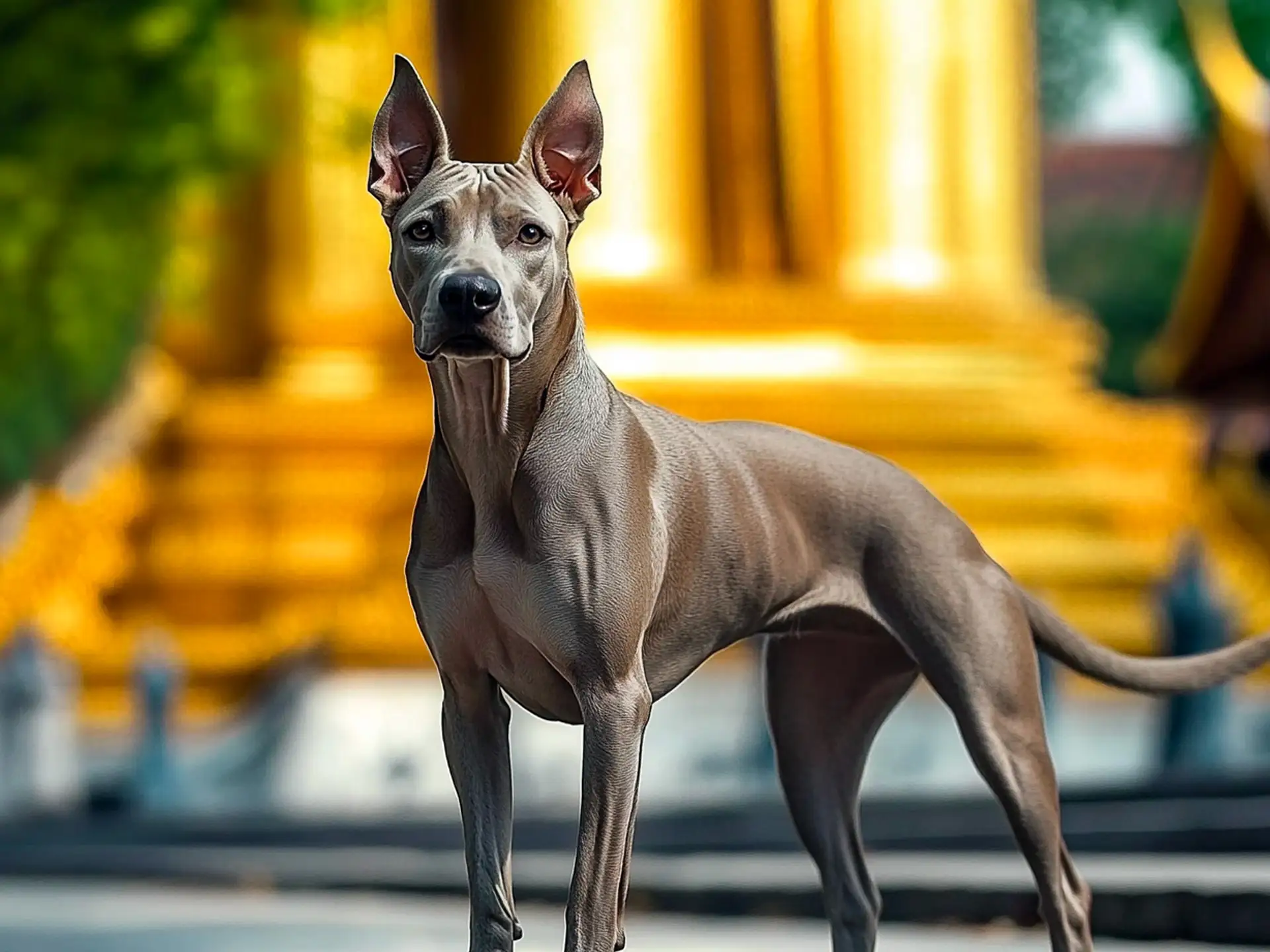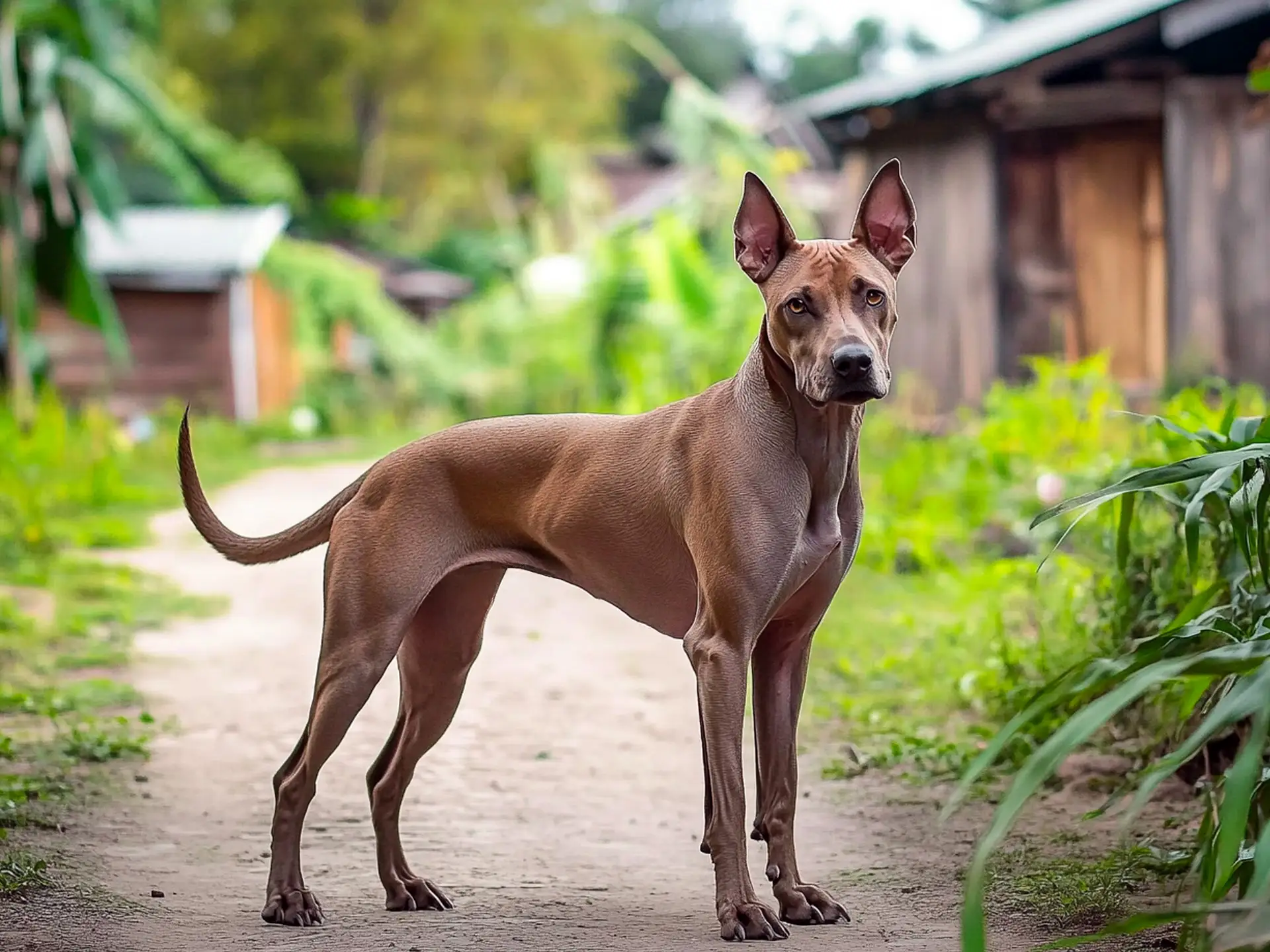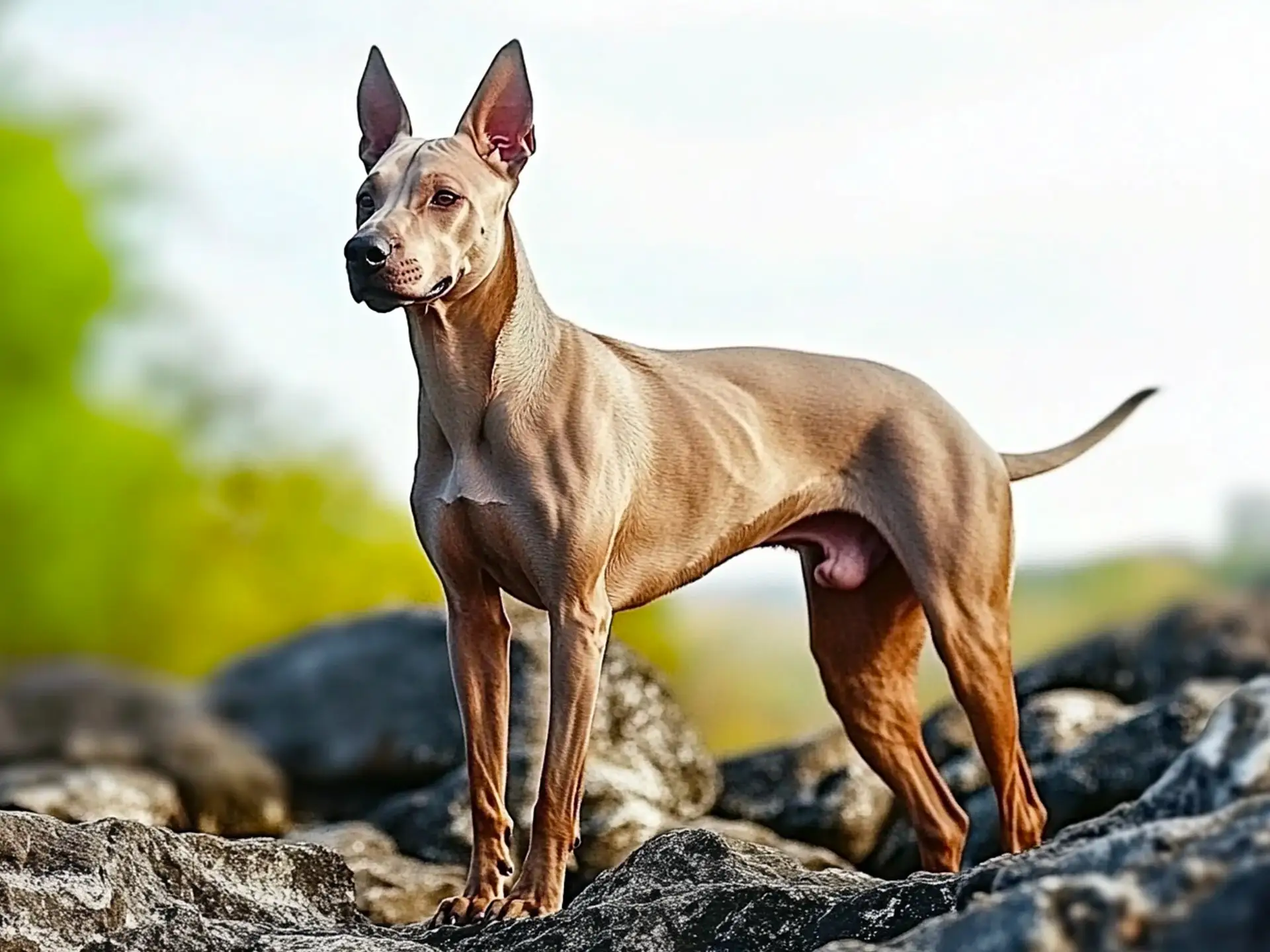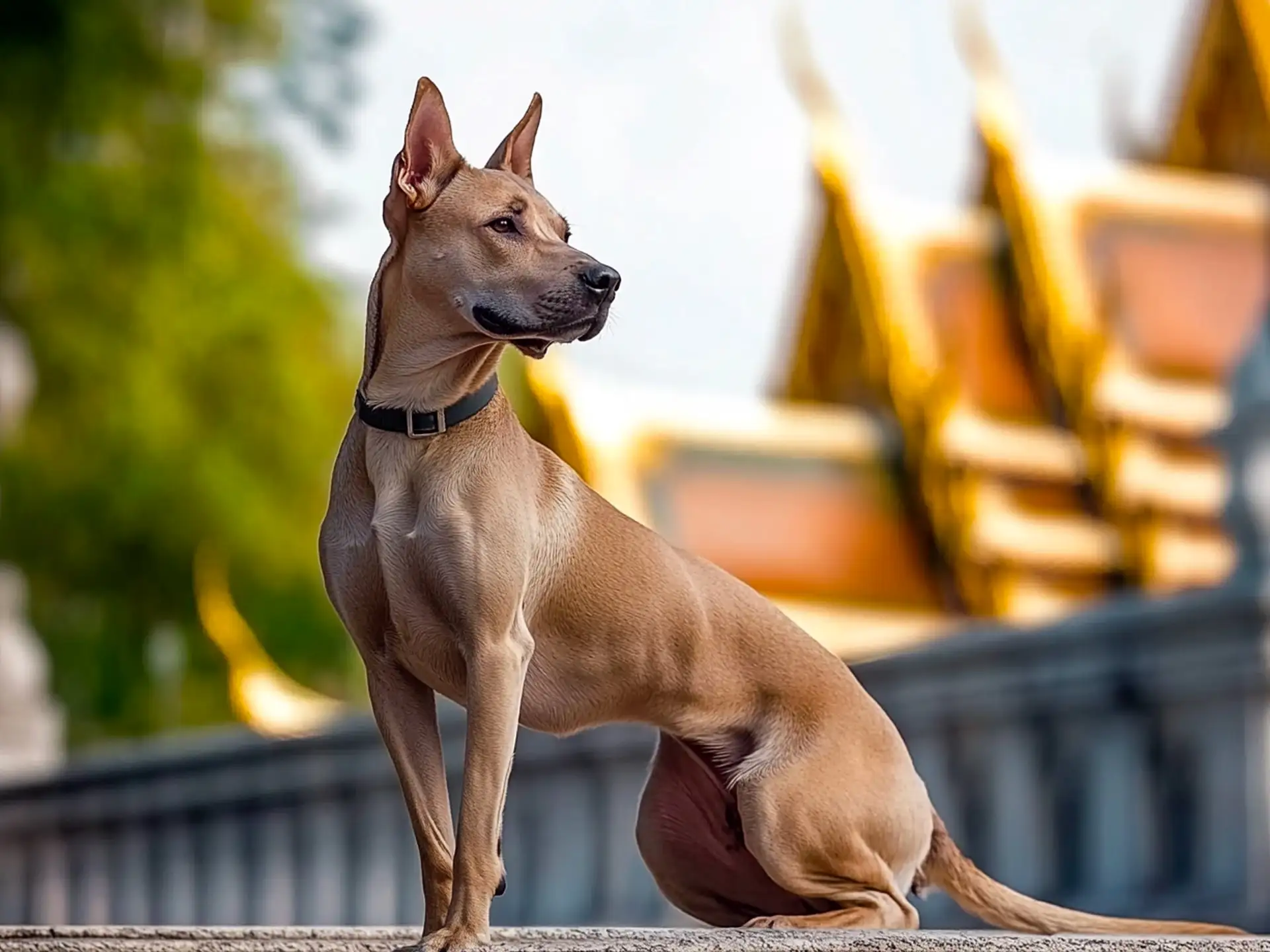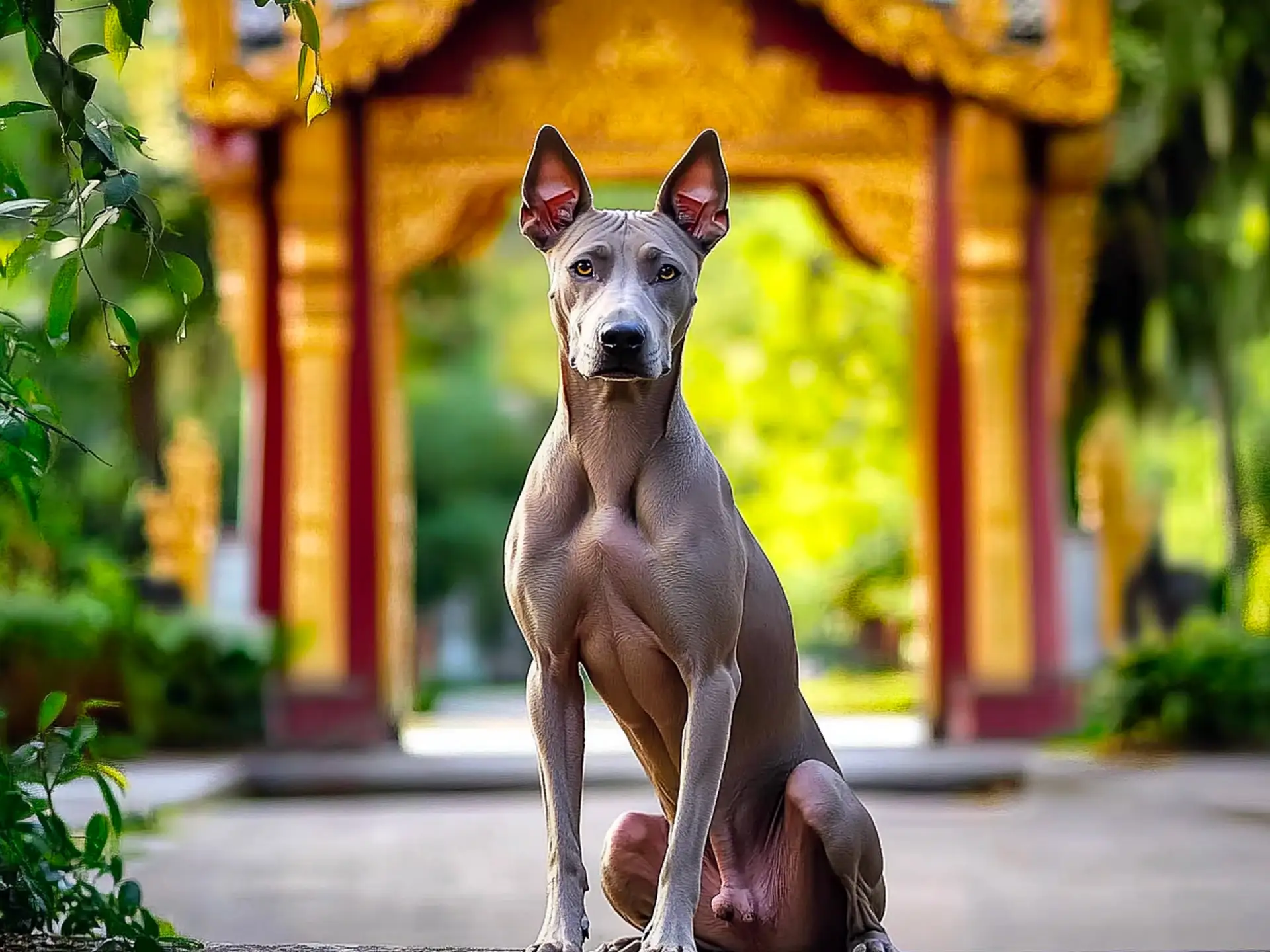Thai Ridgeback Dog Breed Info & Overview
The Thai Ridgeback is a striking, rare dog known for the unique ridge of hair running along its back. With a protective nature, athletic physique, and centuries-old heritage, this breed stands out among dedicated canine enthusiasts. Despite its strong-willed temperament, it can form deep bonds with experienced owners who appreciate its loyal companionship.
Characteristics
Pictures
Breed History
Legend has it that these dogs roamed Thailand’s rugged countryside centuries ago, serving as loyal companions and versatile helpers. They’re believed to have hunted game and guarded rural homesteads, thriving in tropical climates where resilience and bravery were crucial. Over time, villagers prized them for their keen instincts, forming a foundation for the breed’s future development.
One unique aspect is the prominent dorsal ridge—a signature trait that set them apart from other regional dogs. Historical records suggest that selective breeding refined this ridge, solidifying the Thai Ridgeback’s distinct appearance. Even though written documentation is sparse, local oral traditions point to a fierce determination and resourcefulness that shaped the breed we recognize today.
As Thailand modernized, the Thai Ridgeback became less of a rural necessity and more of a national treasure. Enthusiasts began showcasing the breed abroad, drawing attention to its rare status. Although still uncommon compared to rare dog breeds, it has gained a dedicated following who admire its history, protective spirit, and close bond with trusted humans.
Temperament, Personality
These dogs have a spirited and independent streak that’s perfectly matched by their fierce loyalty. They form strong attachments to their family, often taking on a protective role in the home. Strangers may find them reserved or even wary at first, but proper socialization helps them develop a balanced approach to new people and environments.
When interacting with children, a Thai Ridgeback typically remains watchful, ensuring everyone stays safe. While they can be gentle playmates, early training is vital to establish respectful boundaries. Supervision is recommended until trust is fully earned, as these pups are protective by nature and may need extra guidance to coexist smoothly with young kids.
With other pets, the situation varies. Some individuals display a hunting instinct, making introductions to cats or smaller animals a gradual process. However, consistent socialization and firm leadership often foster a more harmonious household. Over time, this breed can learn to accept and even bond with other dogs, especially those it grows up alongside.
Physical Characteristics
A quick glance reveals a muscular, athletic frame built for agility and speed. Their sleek coat lies close to the skin, highlighting each well-defined muscle. The signature ridge along the spine runs in the opposite direction of the rest of the coat, giving the Thai Ridgeback its unmistakable silhouette and adding to the breed’s captivating appeal.
Coat colors typically include black, red, blue (gray), or fawn, with variations in tone depending on genetics and lineage. The ears are medium-sized and stand upright, giving the dog a consistently alert expression. A wedge-shaped head and a strong, slightly arched neck create an elegant but sturdy look that commands attention wherever they go.
Beyond their striking physical presence, these dogs are known for keen sight and hearing. Their sturdy build, combined with lean musculature, allows them to navigate diverse terrain—a trait carried over from their hunting past. Overall, each feature serves a functional purpose, making the breed an excellent companion for owners who appreciate a robust, active dog with a unique flair.
Health Issues
Although generally healthy, this breed can be prone to conditions like hip dysplasia, which affects the hip joints over time. Owners can help minimize risks by ensuring puppies come from responsible breeders who screen for such issues. Regular checkups, balanced nutrition, and joint-supportive supplements can also keep potential mobility concerns at bay.
Dermatological problems, especially around the ridge, may occur if grooming and hygiene aren’t maintained. Routine brushing and monitoring the coat for irritations can prevent minor skin troubles from escalating into chronic conditions. Thyroid abnormalities, while not overly common, can occasionally appear, so periodic blood work is advisable.
Early detection is crucial, so schedule annual vet visits and remain attentive to any unusual behaviors, appetite changes, or fluctuations in energy levels. Vaccinations, parasite control, and recommended health screenings all contribute to a Thai Ridgeback’s well-being. When owners stay proactive, these dogs often live a long, active life that reflects their hardy ancestral roots.
Grooming Needs
Thanks to their short coat, Thai Ridgebacks don’t require elaborate grooming. A simple weekly brushing helps remove loose hairs and keeps their coat shiny. This minimal fuss routine suits busy owners who still appreciate a well-kept canine companion. Because they shed moderately, staying on top of grooming duties makes a noticeable difference in both your home and your pup’s comfort.
Focus on gentle brushing around the ridge, as this area can be sensitive. Use a rubber curry brush or a soft bristle tool for best results—rough handling may irritate the skin or even damage the ridge’s distinctive shape. Bathing every couple of months is usually sufficient, but extra baths might be needed if your dog enjoys muddy adventures.
Don’t forget general upkeep like trimming nails, cleaning ears, and checking teeth regularly. Because the Thai Ridgeback is active, nails can wear down naturally, but always keep an eye out for overgrowth. Wiping ears gently once a week helps prevent infections, and dental chews or tooth brushing promote healthy gums. With this low-maintenance approach, your dog will look and feel its best.
Exercise Requirements
High energy is a hallmark of this breed, so prepare for plenty of daily exercise. A brisk walk or jog, coupled with interactive play sessions, will keep them mentally and physically engaged. Owners who enjoy outdoor excursions—like hiking or running—often find the Thai Ridgeback is a willing companion that thrives when on the move.
Structured activities like agility training or rally obedience can also challenge this breed’s quick mind. Providing varied exercise reduces boredom, which helps prevent undesirable behaviors such as excessive barking or destructive chewing. Keep sessions upbeat and positive, allowing your dog to work off energy in constructive ways.
A fenced yard is an advantage, but be mindful that these dogs can jump or climb if something grabs their attention. Always supervise playtime, ensuring that the space is secure. For city dwellers, consistent leash walks and trips to well-managed dog parks can suffice, as long as you commit to daily, high-quality exercise that suits this robust breed’s dynamic nature.
Training Tips
Early socialization is paramount for a Thai Ridgeback. By exposing your pup to various sounds, smells, and people, you’ll help them develop confidence and reduce wariness later on. Don’t shy away from controlled encounters with other dogs—these experiences encourage better canine manners and foster healthier interactions throughout adulthood.
In terms of obedience, they can be headstrong and require a firm yet patient approach. Positive reinforcement techniques—like treats, praise, and play—motivate them far more effectively than harsh corrections. Consistency is key: short, regular training sessions work best since an overstimulated or bored dog may quickly lose interest.
If a challenge arises, consider professional help from a trainer well-versed in strong-willed breeds. Structured classes also offer a chance to practice newly acquired skills in a controlled environment. Whether you’re teaching basic commands or specialized tasks, remember to keep sessions engaging. This resilient dog responds well to clear leadership, gentle guidance, and a sense of mutual respect.
Nutrition, Diet
Thai Ridgebacks generally do best on a high-protein diet that supports their lean muscle mass. Opt for premium kibble with ingredients like real chicken, fish, or beef as the first listing. Look for formulas specifically crafted for active, medium-to-large breeds, ensuring adequate levels of joint-supporting nutrients such as glucosamine and chondroitin.
When feeding an adult, aim for around 2.5–3 cups of quality kibble per day, split into two balanced meals. Monitor your dog’s body condition regularly, and adjust portions if they gain or lose weight unexpectedly. Some Thai Ridgebacks with more intense exercise routines might benefit from an additional half-cup to sustain their energy levels.
For pups, focus on growth-oriented formulas that provide proper calcium-to-phosphorus ratios—this ensures healthy bone development. If you’re unsure about specific nutrient requirements, consult a veterinarian with experience in this breed’s unique needs. Occasional treats or healthy snacks like lean meat morsels can be offered in moderation, but always factor them into overall daily calorie intake.
Adoption, Breeders
When seeking a Thai Ridgeback, verify breeder credentials and ask about health clearances for known issues like hip dysplasia or thyroid concerns. Reputable breeders are transparent about their lines’ medical histories and breeding practices. Make sure you meet the parents if possible, observing their temperament and overall condition before committing.
If adoption is on your radar, keep an eye on dedicated rescue groups or organizations focused on this breed. They can sometimes be found through the American Thai Ridgeback Association or larger pet adoption sites like Petfinder. Though rarer in shelters, these dogs do show up occasionally when owners realize they’re not prepared for a high-energy companion.
Checking references, discussing living arrangements, and exploring each dog’s background goes a long way toward successful placement. Whether you choose to adopt or work with a breeder, prioritize open communication and a thorough understanding of the breed’s demands. This is especially crucial if you’re venturing into Thai Ridgeback ownership for the first time, given their unique needs and protective nature.
Family Pet?
While this breed’s instincts lean toward protection, with proper socialization, they can fit into a family setting that’s ready for an alert, watchful companion. They tend to bond deeply with their “pack,” so children and adults who interact respectfully will find a loyal friend. Adequate guidance ensures kids understand boundaries and the responsibilities of caring for a spirited canine.
Harmony with smaller pets depends on the individual dog and how thoroughly they’re socialized. Some Thai Ridgebacks adjust well to multi-pet households, while others need careful introductions and ongoing supervision. Firm structure and consistent positive training help set everyone up for success, ensuring the dog remains an engaging, confident member of the family unit.
Families who thrive with this breed typically enjoy outdoor activities, exercise sessions, and mental stimulation. A calm yet decisive approach to leadership creates a stable environment that nurtures the breed’s best qualities. When the dog’s physical, mental, and emotional needs are met, it reciprocates with unwavering loyalty and affection, forming a cherished bond within the household.
Right For You?
Active individuals or families who relish the idea of a spirited, protective companion often find the Thai Ridgeback appealing. Owners seeking a “velcro” dog eager to follow them everywhere might be charmed by this breed’s loyalty. However, the strong-willed nature means first-time dog parents could be in for a steep learning curve, especially without prior experience handling independent canines.
If you’re uncertain, assess your lifestyle: Can you commit to daily exercise, firm but fair training, and regular mental stimulation? Will you have time for early socialization, ensuring the dog grows into a balanced adult? Answering these questions honestly helps determine whether a Thai Ridgeback is a great match or if a less demanding breed might be more appropriate for your home.
Remember, every dog is an individual, so factors like personality, upbringing, and health all contribute to the overall experience. The right match often comes down to mutual compatibility. If you can provide consistency, leadership, and plenty of love, you’ll be rewarded with a steadfast friend who offers protection, companionship, and a dash of that rare, exotic flair this breed is famous for.
Conclusion
If you crave a loyal, active guardian with an intriguing past and a striking appearance, the Thai Ridgeback just might be your ultimate canine companion. Its rare status, protective traits, and energetic disposition require a dedicated owner willing to invest in early training, socialization, and daily exercise. In return, you’ll experience a remarkable bond with a dog that’s as captivating as it is devoted.
FAQs
-
How does the Thai Ridgeback’s temperament differ from other ridgeback breeds?
The Thai Ridgeback is more independent and primitive than the Rhodesian Ridgeback or Phu Quoc Ridgeback. It retains strong survival instincts, making it wary of strangers but deeply loyal to its family. Proper socialization and firm leadership are key to a well-balanced dog.
-
Can a Thai Ridgeback live comfortably in cold climates?
The Thai Ridgeback’s short coat is designed for warm, tropical environments, so cold weather is not ideal. In cooler climates, they require dog coats, warm bedding, and limited exposure to freezing temperatures to prevent discomfort and health issues.
-
Do Thai Ridgebacks have strong hunting instincts?
Yes! Bred for hunting and guarding, the Thai Ridgeback has a high prey drive and will instinctively chase small animals. Owners should provide secure fencing and consistent recall training to manage their hunting instincts, especially in multi-pet households.
-
Why are Thai Ridgebacks considered rare outside Thailand?
Unlike many other breeds, the Thai Ridgeback has remained relatively unchanged for centuries and was only recently introduced to Western countries. Their strong-willed nature and training requirements make them less common among casual dog owners, contributing to their rarity.
-
Is a Thai Ridgeback a good choice for first-time dog owners?
No, Thai Ridgebacks are best suited for experienced dog owners. They require firm leadership, extensive training, and early socialization to manage their independent and dominant temperament. Without proper guidance, they can become aloof, territorial, or difficult to train.
Breed Ratings
The Thai Ridgeback is sharp and learns quickly, but can be independent, requiring firm guidance.
While they enjoy activities, they’re sometimes selective about when and with whom they play.
High energy suits an active lifestyle; they benefit from routine exercise to remain content.
Their short coat sheds moderately, especially during seasonal changes.
Historically used for hunting, they’re keen to chase smaller animals if not properly trained.
Minimal coat maintenance is needed, though the ridge requires gentle attention.
They’re smart but can be willful; consistent, positive methods work best.
Prolonged isolation may lead to boredom or anxiety; they prefer companionship.
Alert barks are common, but they’re not incessant if sufficiently exercised.
Generally light droolers, they’re relatively tidy around the mouth area.
Can coexist with other dogs if socialized early, though they may be territorial.
Fairly robust, but watch for hip or skin issues; regular vet care is key.


